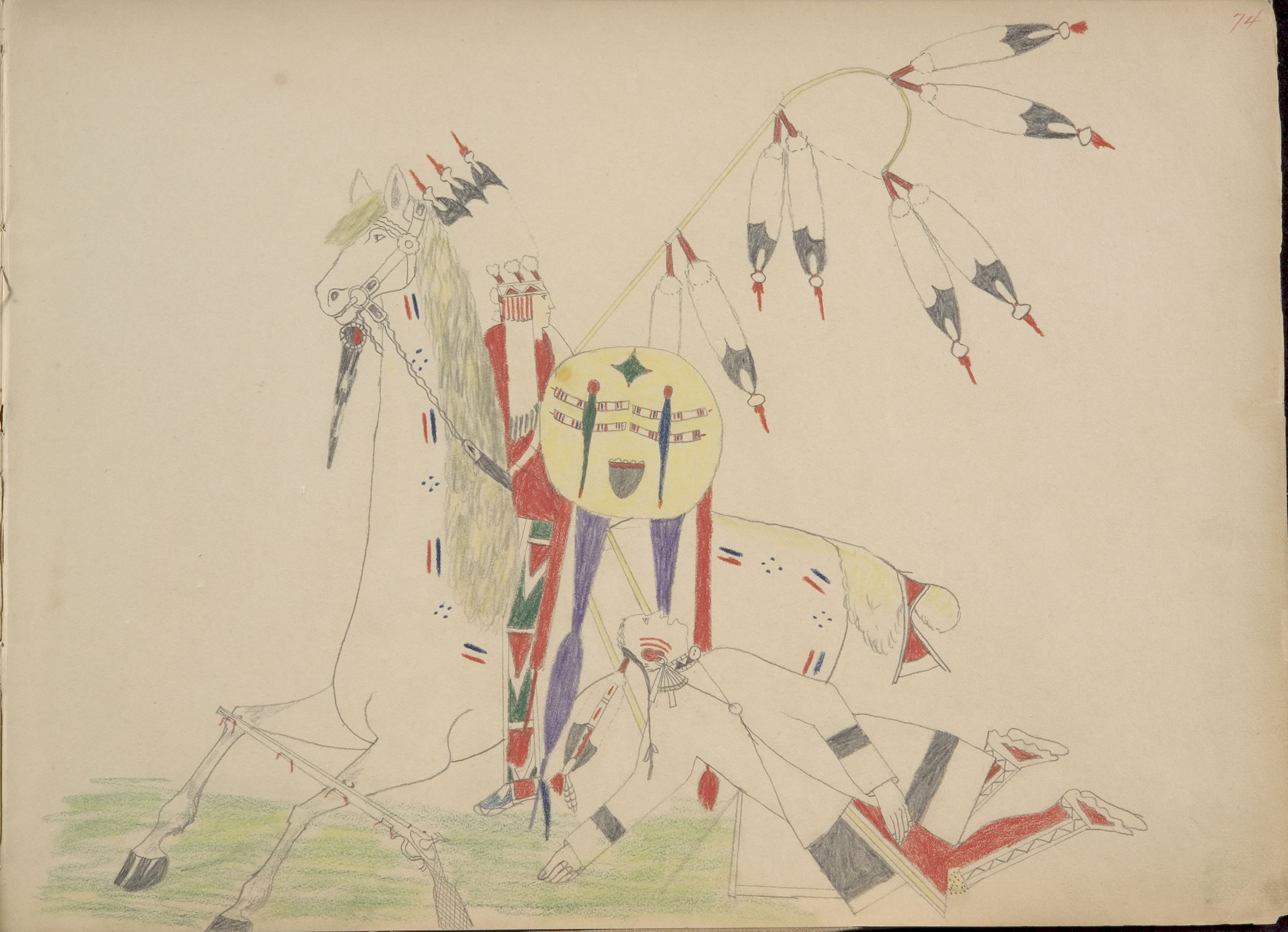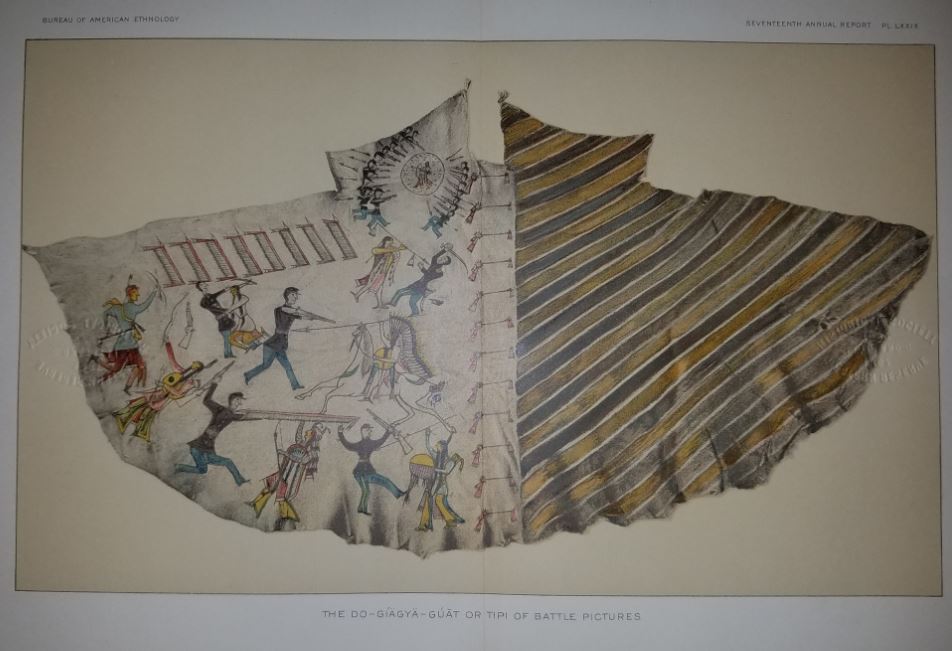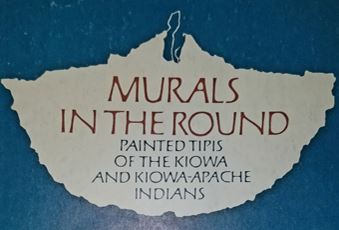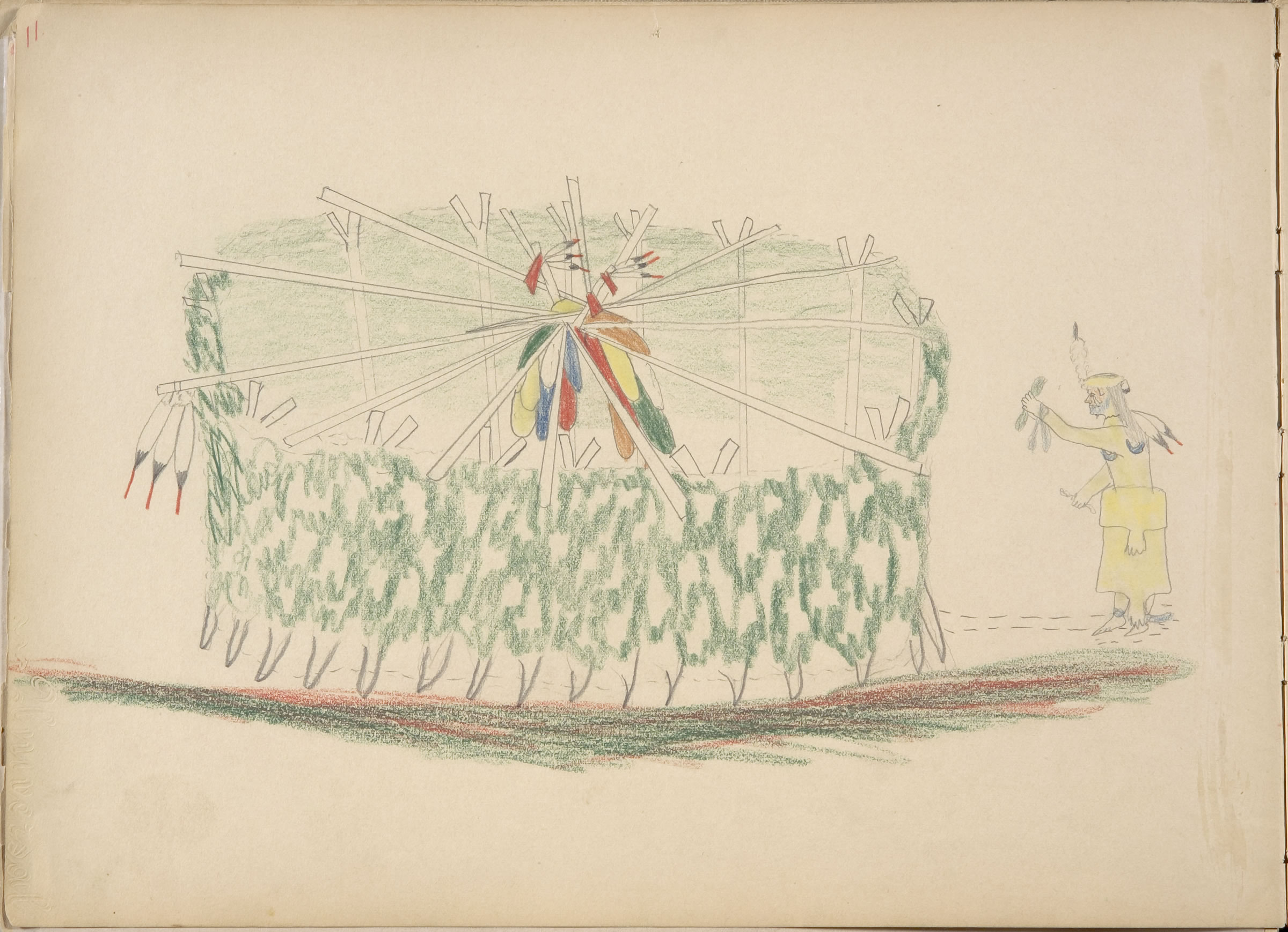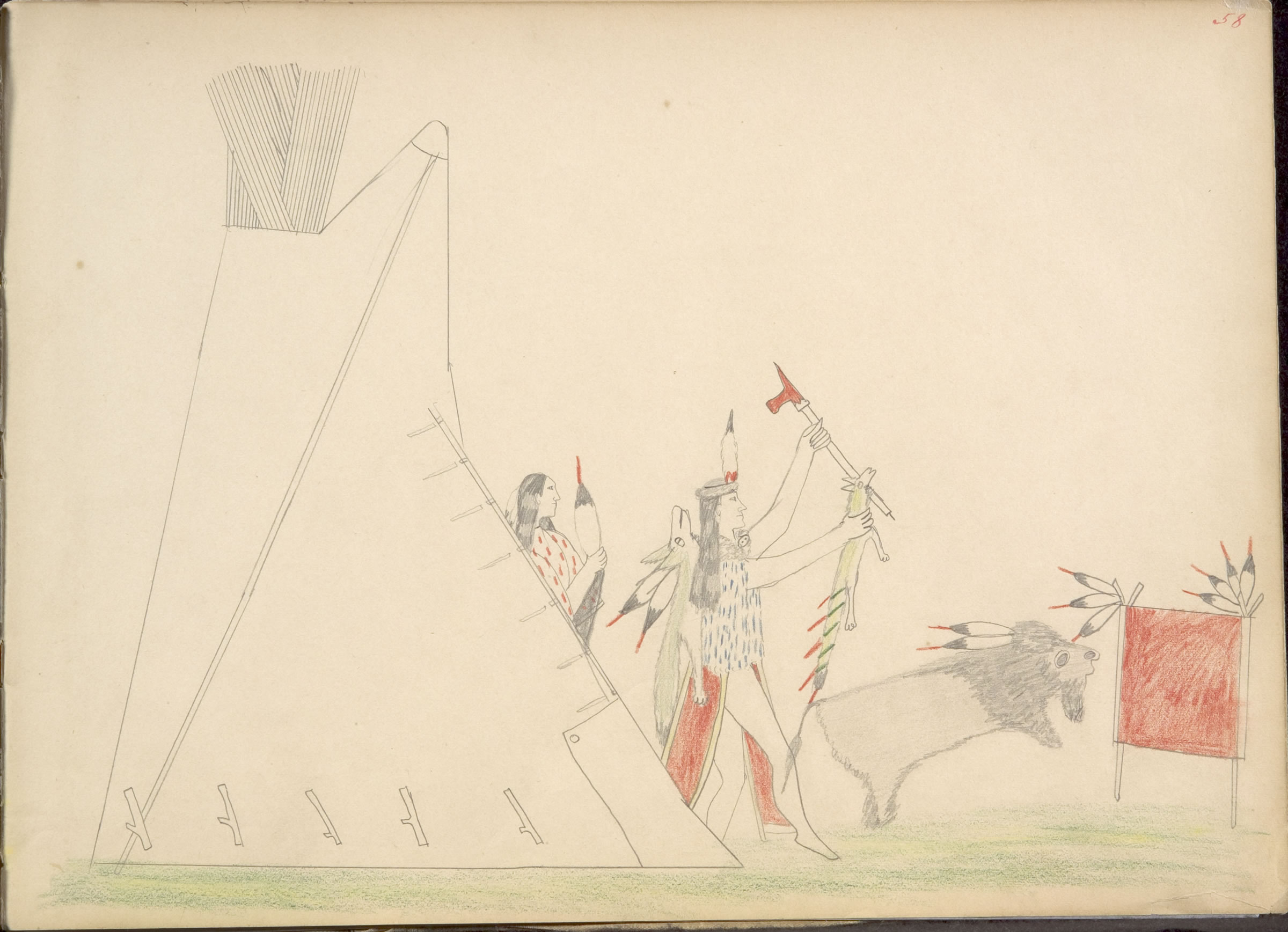Silver Horn's Kiowa language name was Haungooah, Candace Green reports. People who were close to Silver Horn told Green the name was a reference to a white shine glinting off of hard metal and the gleam on an animal horn: haun equaling "white metal" and "gooah" equaling horn. Silver Horn was also known sometimes as Iron Horn. My thought is that Silver Horn's introduction of an airbrush-like white flare on horses' hooves in some of his works may represent a signature symbol as well as an artistic innovation. The flare coming off the horse hoof in this plate is representative. It would be an integration of traditional pictorial syntax that made his work both traditional and pre-modern.
The Do-Giagya-Guat or Tipi of Battle Pictures by Oheltoint, ca 1892 Oheltoint, also known as Charlie Buffalo, some time after leaving Fort Marion, was commissioned by James Mooney, a Smithsonian anthropologist, to paint a model tipi cover. It is shown here in a photographic plate in the collection of the writer. It was a plate included as part of the 17th annual report by the Bureau of American Ethnology. Candace Green reports in her book about Silver Horn that the Tipi of Battle Pictures design was held in the Oheltoint/Silver Horn family from about 1845. John C. Ewers reports in Murals in the Round the tipi began ownership by the family after it was given as a peace offering by Sleeping Bear, a Cheyenne chief, to Kiowa Chief Little Bluff. The tipi model is the only known work created by Oheltoint after leaving Fort Marion. A full-scale model of the tipi design was produced by Silver Horn and the tipi was depicted by Silver Horn in other art he created. Time frames permit this model tipi to have been one of several displayed at the St. Louis World's Fair in 1904, but this is not at this time documented by the writer. Mooney's goal, Ewers reports, was to have tipi models prepared to present a scale model of a Sun Dance encampment. Sun Dance encampments attracted painted tipis of high ranked attendees and these tipis were arranged in a consistent circular sequence related to Kiowa band. Mooney did not achieve this larger goal, Ewers reports. Commissions for Mooney's model tipis were started in 1891 with the last ones not completed until Spring in 1904. Ewers also reports Mooney was exacting in involving those with personal knowledge of the decoration of the various tipis in the replication process.
Murals in the Round By John C. Ewers Murals in the Round is the catalogue of an exhibition of model tipis commissioned by James Mooney, Smithsonian Institution. The exhibit took place at Renwick Gallery of the National Collection of Fine Arts, Smithsonian Institution,between December 2, 1977-November 12, 1978, A copy is currently in the writer's collection of research materials.
Green illuminates Silver Horn's work which, most often outside of sacred interiors (as in this view in a work maintained at the Nelson-Atkins and digitized for view on this website) and rarely within. Silver Horn provides particulars of the Kiowa Medicine Lodge/Sun Dance, Peyote Road, and Ghost Dance Ceremonies. Through implication or frank depiction, Silver Horn summarizes these rituals in picture writing as well as illustrating the action and material culture associated with them. He also effectively accumulates the history of Kiowa cosmology within his work.
Silver Horn depicts one of various newly minted ceremonies developed to coax the return of the buffalo to his economically displaced people. The buffalo being used to make medicine is created with a hide and wooden frame. The hope was to see the animal reanimate. The illustration is a plate in Green's book and is within the Silver Horn ledger made available by the Nelson-Atkins to this website. These messianic movements, Green writes, were understandably short lived but sincere attempts.
I was able to see this ledger sold by Silver Horn to Dudley Brown at the Nelson Atkins in Kansas City. Curators there have an intact ledger exhibited with two folios exposed.. Adjacent to the ledger there is an easy-to-use digitized viewing panel so the entire ledger may be viewed with excellent definition.
